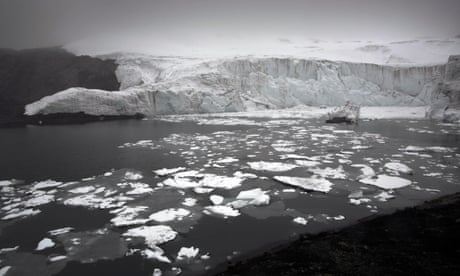Articles Menu

The country’s worst drought in 25 years, spurred by poor management, El Niño and climate change, has reservoirs drying up and hospitals struggling
Teodora Cauna de Quispe hasn’t had water at her house in Bolivia’s capital, La Paz, for two weeks. “We can’t wash ourselves or our clothes,” she said. “Every so often there is a bit of muddy water that spurts out of the tap on my patio.”
A tanker has delivered water only once, and Teodora – who, like many of her neighbors, works as a maid in a wealthy neighborhood nearby – has been forced to buy expensive bottled water for her family to drink.

This week, President Evo Morales declared a national emergency, after the combined impact of the El Niño weather cycle, poor water management and climate change helped cause the country’s worst drought in 25 years. Water rationing is in effect for the first time ever in La Paz, where the three main reservoirs that provide the city’s water are almost dry. The semi-arid highlands surrounding the capital rely almost entirely on replenishment by rainfall.
Five other cities face severe water shortages. Bread, a key staple here, is increasingly scarce and many hospitals are working at half capacity, suspending non-emergency surgeries and dialysis. In the poor neighborhoods of southern Sucre, taps have run dry for three weeks.
The drought has hit rural areas hard as reservoirs and lakes dry up, crops wither and animals die. Indigenous rituals beseeching the gods for rain have taken on a particular urgency this year and last, when the drought began.
In the southern highlands, where most of Bolivia’s quinoa is grown, drought has slashed the 2016 crop by as much as half. Coriaco Mamani, a schoolteacher, helps his elderly parents with the harvest every year. “There’s almost no quinoa this year,” he said. “My parents depend on the harvest for their survival. I’m not sure what they will do.”
Such anxiety is widespread. “We are in a state of shock,” said La Paz water specialist Monica Ayala. Frustration over the lack of water is often directed at the state company Epsas, created in 2007 after a campaign against water privatization by Aguas de Illimani, the local subsidiary of the French conglomerate Suez. The demonstrations mirrored the Cochabamba “water war” in 2000 against turning water distribution to a multinational consortium.
Bolivian citizens stand in line to get water. Photograph: Martin Alipaz/EPA
Protesters in El Alto were infuriated by Suez’s refusal to expand services to poor neighborhoods that were deemed unprofitable, and water privatization was reversed. The newly formed Epsas undertook an extension of services to outlying areas.
“Thanks to Epsas efforts, we have 84% potable water coverage, which of course means increased consumption,“ said Ayala. “But tariffs haven’t risen in nine years, so Epsas didn’t have the income to develop new water sources.”
The last reservoir built for La Paz and El Alto was constructed 23 years ago when the cities were almost 40% smaller than they are today. The next reservoir is expected to come on line next July.

Meanwhile, existing infrastructure is crumbling, and public water companies are plagued by corruption and incompetence, said Ayala. “As much as half of all water is lost to leaky pipes and illegal connections.”
The current shortage is exacerbated by the rapid retreat of Bolivia’s glaciers. The Rutgers University climate scientist Jim Miller has found that temperatures at altitudes such as El Alto’s, which lies above 13,000 feet, have risen 75% faster than in lower regions over the past 20 years. “You hear people everywhere complaining how hot it is,” said Limber Sánchez, director of the not-for-profit group CEPA in high-altitude Oruro. “Our average temperature has risen by 2C (3.6F) in just a few years.”
Vice-President Álvaro García Linera has announced government plans to build “dozens and hundreds of reservoirs”. But Epsas’s new adminstrator, Humberto Claure, has urged caution. “This is not going to be fixed quickly,” he told a state television program. “It will take at least a year.”
He then announced that water would be available for three hours rather than the previous eight every three days, and that rationing would be extended to parts of El Alto.
“What can we do?” asked 24-year-old Viviana Ticona Mamani in response to the news. Surveying the dusty brown field behind her house, she said: “Without water, there is no life.”
[Top photo: Demonstrators holding buckets protest amid the drought, in the center of La Paz. Photograph: David Mercado/Reuters]